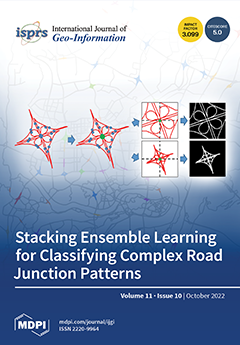Open AccessArticle
Socio-Ecological Vulnerability in Aba Prefecture, Western Sichuan Plateau: Evaluation, Driving Forces and Scenario Simulation
by
Xingping Yang, Xiaoai Dai, Wenyu Li, Heng Lu, Chao Liu, Naiwen Li, Zhengli Yang, Yuxin He, Weile Li, Xiao Fu, Lei Ma, Yunfeng Shan and Youlin Wang
Cited by 14 | Viewed by 3159
Abstract
With the social and economic development in recent years, human activities have been more extensive and intensified. As a result, ecosystems are damaged to varying degrees, and regional ecological environments tend to be weaker. The socio-ecological system in Aba Prefecture, Western Sichuan Plateau,
[...] Read more.
With the social and economic development in recent years, human activities have been more extensive and intensified. As a result, ecosystems are damaged to varying degrees, and regional ecological environments tend to be weaker. The socio-ecological system in Aba Prefecture, Western Sichuan Plateau, China, the researched area, also faces increasingly serious problems. To advance ecological civilization development in a coordinated way across the country, the national government and the competent authorities have launched a series of new strategies. Research on socio-ecological vulnerability, a major part of the ecosystem protection and restoration program, is provided with powerful spatial data observation and analysis tools thanks to the invention and development of remote sensing and geographic information system technologies. This study was based on the vulnerability scoping diagram (VSD) framework. Multi-source data such as digital elevation model (DEM), geographical data such as land use types, soil and geological disasters, remote sensing image data, meteorological data and social statistics data from 2005 to 2019 were used to construct the temporal social-ecosystem vulnerability evaluation index database of Aba Prefecture, Western Sichuan Plateau. The spatial principal component analysis (SPCA) is applied to evaluating the socio-ecological vulnerability and analyzing its spatial-temporal variation in Aba Prefecture, Western Sichuan Plateau. To probe into the driving effects of various impact factors on the socio-ecological vulnerability, the Geodetector is used to analyze the driving factors. The ordered weighted average (OWA) method is applied to the multi-scenario analysis of socio-ecological vulnerability in the researched area. The conclusions of this study are as follows: (1) from 2005 to 2019, the spatial distribution characteristics of exposure and sensitivity in Aba Prefecture were higher in the southeast and lower in the northwest, and the overall spatial distribution characteristics of socio-ecological system vulnerability showed that the degree of vulnerability increased from the north to the southeast. (2) Extreme natural climate conditions play a leading role in the driving of socio-ecosystem vulnerability, followed by human production activities and geological hazards. (3) The degree of social-ecosystem vulnerability in Aba Prefecture will increase with the increase of decision risk coefficient. The results of social-ecosystem vulnerability under the status quo scenario are similar to those in 2010 and 2019, indicating that the selected evaluation factors can reflect the actual social-ecosystem vulnerability. In the sustainable guided scenario and the unsustainable guided scenario, the proportion of the area of the social-ecosystem severe vulnerability level was at the minimum value and the maximum value, respectively.
Full article
►▼
Show Figures





